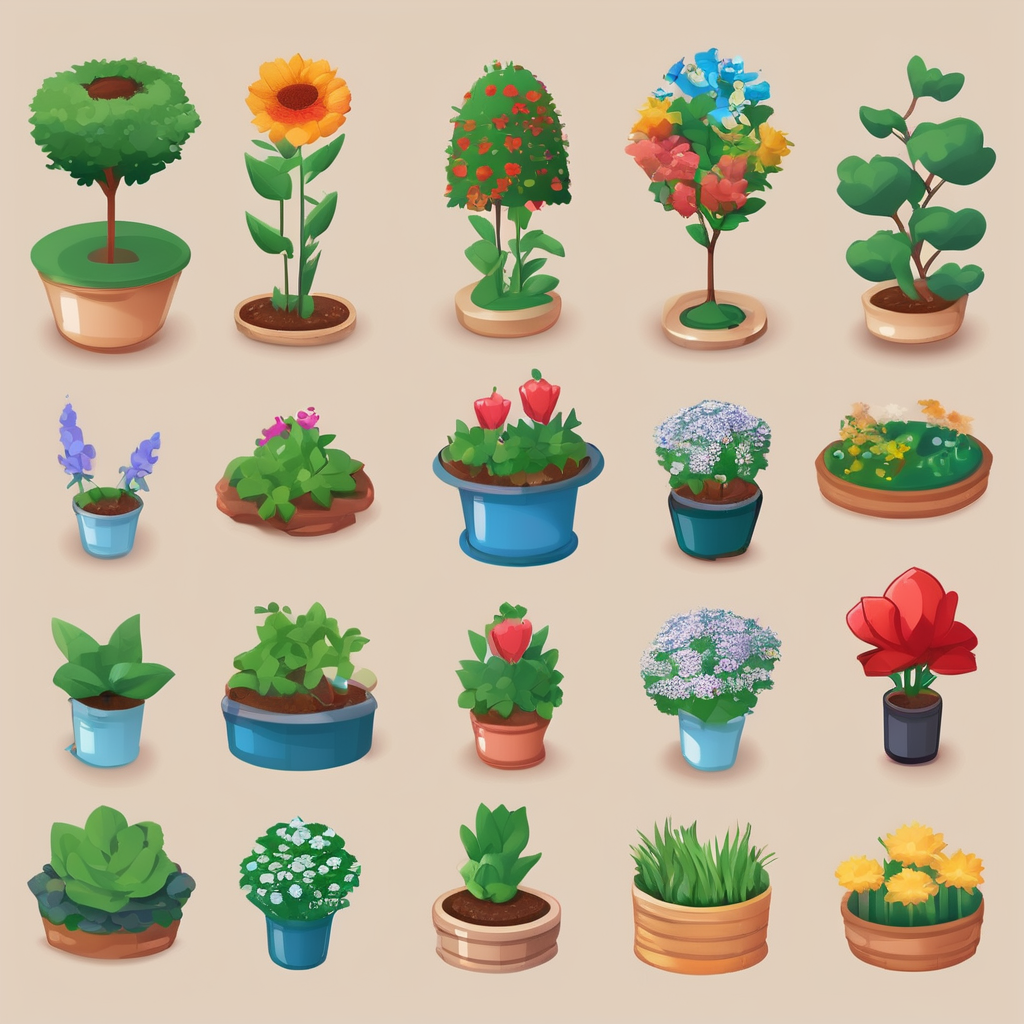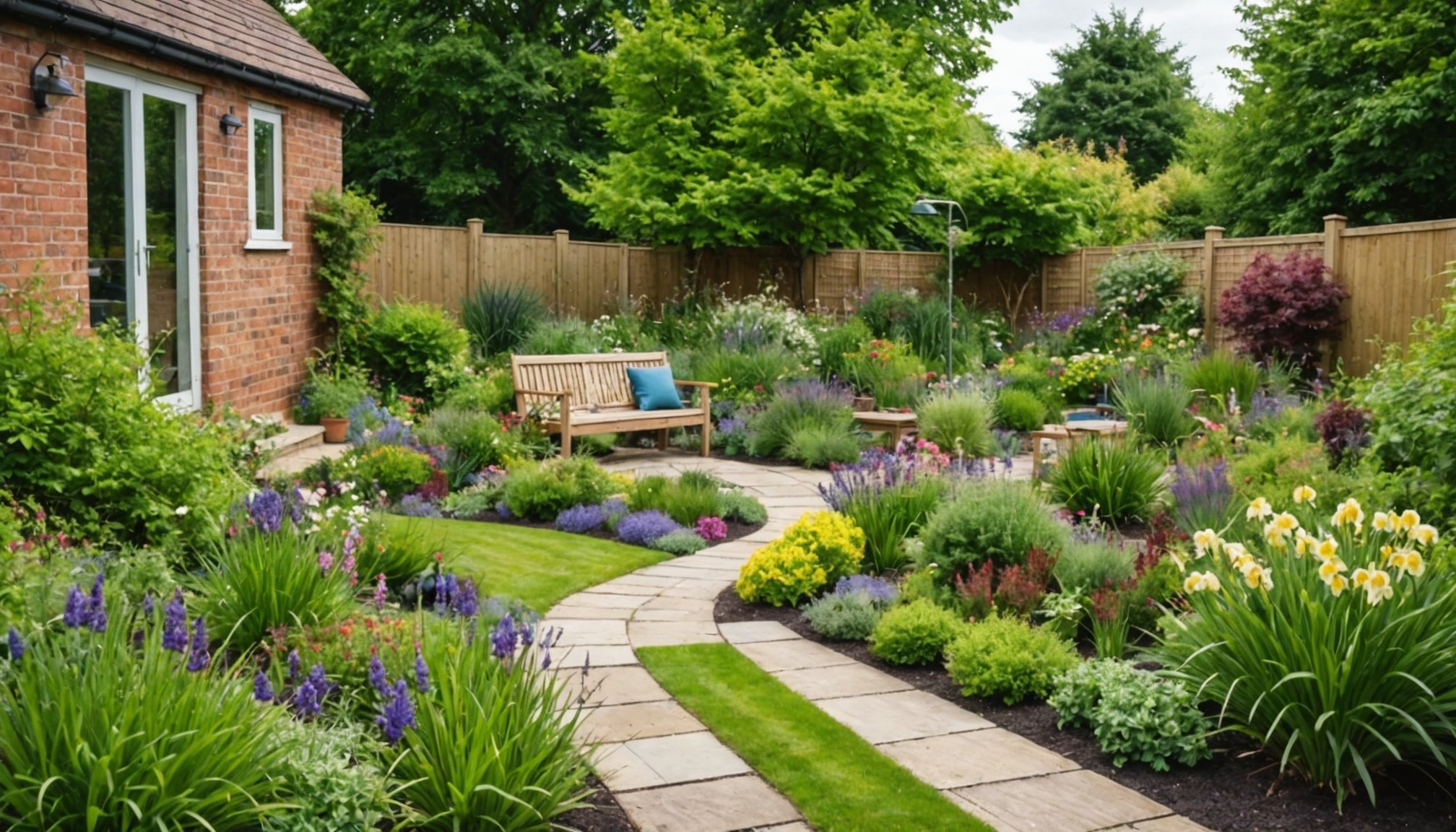Transforming your home into a sensory garden can elevate your relaxation experience. Imagine a space filled with soothing scents, calming sounds, and delightful textures. This step-by-step guide reveals how to create a serene retreat right in the heart of the UK. From choosing the right plants to incorporating sensory elements, you'll discover practical tips tailored to your environment. Embrace the journey towards ultimate tranquility and let nature rejuvenate your mind and spirit.
Understanding Sensory Gardens
Sensory gardens are designed to stimulate the five senses—sight, sound, touch, taste, and smell—through strategic garden design principles. They are crafted with the purpose of enhancing relaxation and well-being, providing a therapeutic environment for visitors. These gardens are particularly beneficial for individuals with sensory processing disorders, offering a safe space to engage with the environment in a controlled manner.
Avez-vous vu cela : Transform Your UK Master Bedroom: 10 Steps to Crafting a Lavish En-Suite Bathroom
The benefits of sensory gardens extend beyond relaxation. They promote mental health by reducing stress and anxiety, fostering mindfulness, and encouraging physical activity. Engaging with nature in such a setting can also improve mood and cognitive function.
Key garden design principles include selecting a diverse range of plants and materials that offer various textures, colours, and scents. Incorporating elements like water features can add soothing sounds, while edible plants can provide taste experiences. Accessibility is crucial, ensuring paths are navigable for all individuals, including those with mobility challenges.
Lire également : Designing a Cozy Minimalist Bedroom: Tips for Modern Apartments in the UK
By focusing on these principles, sensory gardens become a holistic sanctuary, offering a multi-sensory experience that enriches the mind and body. Whether for therapeutic purposes or personal enjoyment, these gardens serve as a reminder of the profound connection between nature and human well-being.
Planning Your Sensory Garden
When embarking on garden planning, it's essential to begin with a thorough site assessment. This involves evaluating the available space, considering factors like sunlight exposure, soil quality, and existing vegetation. Understanding these elements will guide you in selecting the most suitable location for your sensory garden.
Choosing the right location is crucial. Ideally, it should be a spot that receives ample natural light yet offers some shaded areas to accommodate different plant needs. Consider proximity to water sources and ease of access for maintenance. The location should also provide a sense of privacy and tranquility, enhancing the garden's therapeutic potential.
Once the site is assessed, focus on creating a design layout that integrates sensory elements effectively. This could involve arranging plants to form distinct zones, each dedicated to a particular sense. For instance, a section with fragrant flowers for smell, or a tactile area with textured leaves and surfaces. Incorporate pathways that allow easy navigation, ensuring the garden is inclusive and accessible to all visitors.
By prioritising these aspects in your garden planning, you can craft a sensory garden that is both functional and enriching, offering a sanctuary that delights and calms the senses.
Selecting Plants for a Sensory Experience
Choosing the right plant selection is crucial for creating a vibrant sensory garden. To stimulate the senses, consider incorporating a variety of sensory plants that appeal to sight, smell, and touch.
For visual appeal, select plants with diverse colours and shapes. Brightly coloured flowers like marigolds and sunflowers can create a lively atmosphere. To engage the sense of smell, aromatic herbs such as lavender and rosemary are excellent choices, offering soothing scents that enhance relaxation.
Texture adds another layer to the experience. Consider plants like lamb's ear, which has soft, velvety leaves, or ornamental grasses that sway with the breeze, providing tactile stimulation.
When planning, focus on UK-friendly plants that thrive in the local climate. Hardy perennials like foxgloves and heather are great options, as they can withstand the UK's variable weather.
Seasonal planting is essential to ensure year-round interest. For instance, bulbs like daffodils can provide early spring colour, while late-blooming asters extend the garden’s vibrancy into autumn. Pay attention to growth patterns and spacing to allow each plant to flourish without overcrowding. By considering these factors, you can create a sensory garden that captivates and delights throughout the year.
Incorporating Sensory Elements Beyond Plants
While plants are a core component of sensory gardens, integrating additional sensory elements can greatly enhance the experience. One effective method is adding water features. These elements introduce soothing sounds that promote tranquility and can serve as focal points within the garden. The gentle sound of a bubbling fountain or a small waterfall can create a calming atmosphere, encouraging relaxation and mindfulness.
Natural materials also play a significant role in sensory gardens. Incorporating stones, wood, and gravel can add texture and visual interest, inviting visitors to explore different surfaces. These materials can be used in pathways, seating areas, or as decorative features, providing tactile stimulation and enhancing the garden's aesthetic appeal.
Sound elements, such as wind chimes or plants that rustle in the breeze, can further enrich the sensory experience. The gentle tinkling of chimes or the whisper of leaves adds an auditory layer, making the garden a dynamic environment. Choosing materials and placements that maximise these sounds can create a harmonious and immersive space. By thoughtfully incorporating these sensory elements, a garden can become a multi-dimensional sanctuary that delights all who visit.
Designing for Accessibility and Comfort
Creating an accessible garden design is essential to ensure everyone can enjoy the sensory experience. Begin by developing safe pathways that are wide enough for wheelchairs and walkers, with smooth, non-slip surfaces. These paths should be clearly marked and gently sloped to accommodate all visitors, enhancing ease of movement throughout the garden.
Incorporate comfortable seating options to provide restful spots for relaxation. Choose benches or chairs that offer back support and are made from durable, weather-resistant materials. Placing seating areas at regular intervals allows visitors to pause and engage with their surroundings, promoting a sense of comfort and inclusion.
Safety is paramount in garden design. Ensure pathways are well-lit and free from obstacles to prevent trips or falls. Use contrasting colours to highlight edges and transitions, aiding those with visual impairments. By prioritising accessibility and comfort, the garden becomes a welcoming space for all, fostering a serene and inclusive environment.
Maintenance Tips for Your Sensory Garden
Proper garden maintenance ensures your sensory garden remains vibrant and inviting throughout the year. Regular tasks include watering, pruning, and weeding. Consistent watering is crucial, especially during dry spells, to maintain plant health. Pruning keeps plants in shape and encourages new growth, while weeding prevents competition for nutrients.
Seasonal upkeep is essential for optimal plant care. In spring, focus on planting and mulching to retain moisture and suppress weeds. Summer requires vigilant watering and deadheading to prolong blooming. Autumn is ideal for dividing perennials and planting bulbs for the next year. In winter, protect delicate plants with mulch or fleece.
Managing pests and diseases is vital to garden health. Regularly inspect plants for signs of infestation or disease. Encourage beneficial insects like ladybirds to control pests naturally. Use organic treatments, such as neem oil, to address issues without harming the environment.
By adhering to these maintenance tips, your sensory garden will thrive, offering a continuous sensory experience that delights and inspires.
Visual Inspiration for Your Sensory Garden
Finding garden inspiration can be a delightful journey, especially when exploring successful sensory garden designs in the UK. These gardens offer a wealth of design examples that cater to each of the five senses, providing a holistic approach to garden planning.
Many community sensory gardens serve as excellent visual guides. For instance, the Chelsea Physic Garden in London is renowned for its aromatic herbs and vibrant plant displays, offering a rich sensory experience. Similarly, the Eden Project in Cornwall showcases innovative use of textures and sounds through its diverse plant life and water features.
When planning your sensory garden, consider visiting these community spaces to gather ideas. Observe how elements like colour, texture, and sound are integrated to create a harmonious environment. Take note of design examples such as the use of raised beds for accessibility or the strategic placement of seating areas for optimal relaxation.
By drawing inspiration from these visual guides, you can craft a sensory garden that is both unique and inviting, tailored to your personal preferences and the needs of your visitors.
Additional Resources for Garden Enthusiasts
For those eager to deepen their understanding of sensory gardening, a wealth of gardening resources is available. Recommended books such as "The Sensory Garden" by Sue Minter offer insights into creating immersive environments. Online platforms like the Royal Horticultural Society provide comprehensive guides and tips for cultivating sensory gardens.
Engaging with local gardening groups can enrich your gardening journey. These groups offer a platform to share experiences, exchange ideas, and gain support from fellow enthusiasts. Many communities host regular meetings and events, fostering a sense of camaraderie among gardeners.
Workshops present invaluable opportunities for hands-on learning. These sessions often cover practical aspects of sensory gardening, from plant selection to garden design. Attendees can benefit from expert advice and gain confidence in their gardening skills. Look for workshops hosted by botanical gardens or community centres, which frequently offer classes tailored to different skill levels.
By exploring these resources, garden enthusiasts can enhance their knowledge and skills, transforming their sensory gardens into thriving havens of tranquillity and beauty.












